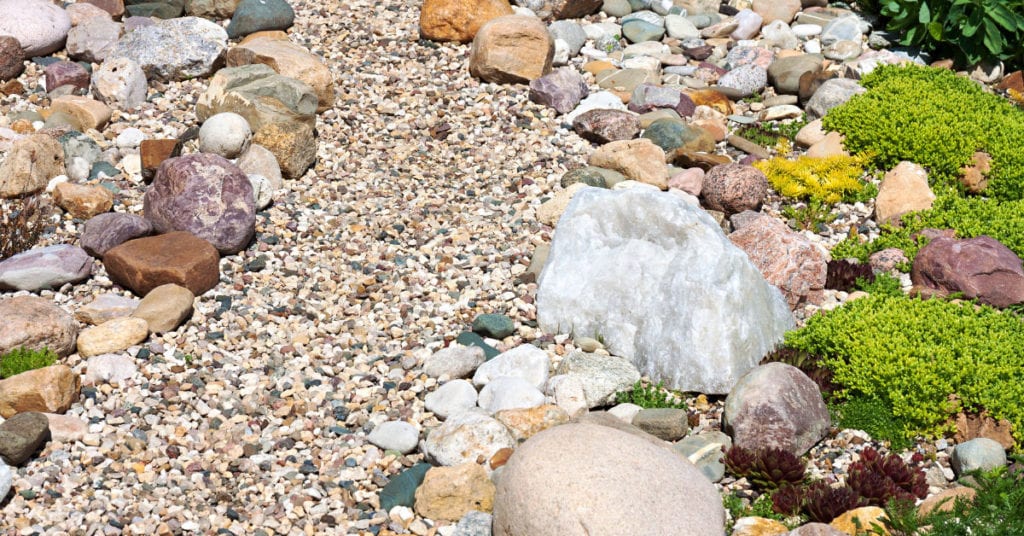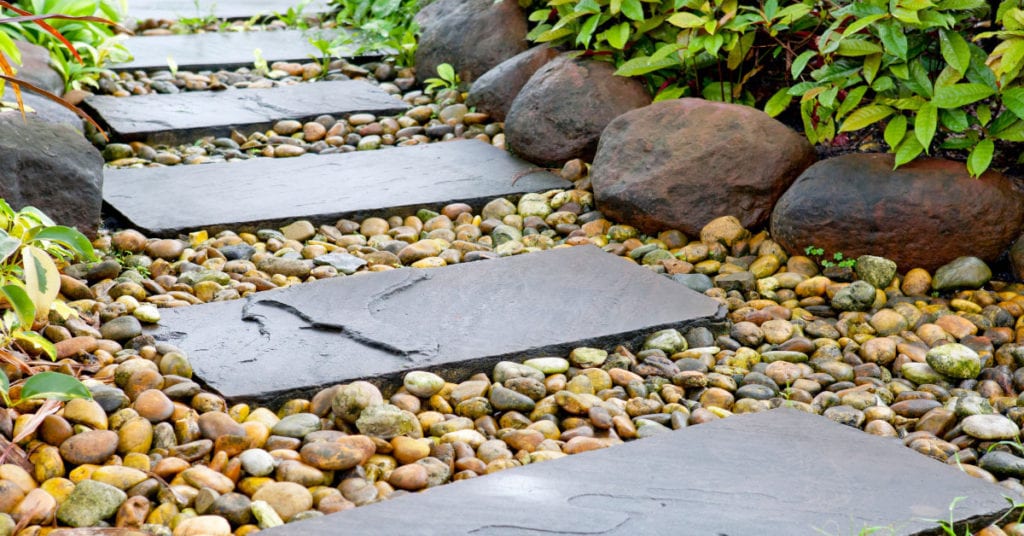What do you typically think of when you hear the word garden? We’re guessing it’s not rocks.
Gardens come in all shapes and sizes, with a variety of purposes. You have ornamental gardens that are lush in greenery and beautiful floral pageantry. You have water gardens that are rooted in antiquity. You can even have an herbal garden, lush with basil, mint or parsley.
But these aren’t the only types of gardens you can create to bring life and tranquility to your property. Rock gardens bring us back down to earth and invoke a sense of groundedness. There is a reason why zen gardens focus heavily on these stone structures. There is a natural peace and calm that is closely associated with these stone gardens. It’s the connection to not only nature but Mother Earth herself that pulls people toward constructing their own rock garden.
If you have ever been drawn to the idea of making your own rock garden it is likely because you find them to be relaxing. These gardens are great spaces for meditation, introspection, and connection to the natural world. You often see these gardens in public spaces but you can create your own just steps from your door.
If you have ever thought about making your own rock garden you’re in the right place. We’re going to give you the ins and outs of creating your own peaceful place on your property.
Choosing The Right Rocks
Rock gardens are only as good as the rocks that are in them. So how do you go about choosing what type of rocks or stones to use for yours? Well, it comes down to personal preference and your current landscape design.
But one piece of advice that we stick to is variety. A mixture of colors, sizes, and types creates a visually appealing diversity that will make your rock garden stand out. When trying to select a color, for instance, look at what colors currently exist in your yard or on your property. Try not to choose too much of the same. If your fence is already grey, you might want to use sepia tones for your rock garden.
There are essentially three sizes of rocks or boulders that you can use. Large rocks or boulders should obviously be used to fill large blank spaces. We like to use the rule of three, meaning that a minimum of three large boulders should be used in a large space. It’s the best way to establish a focal point and leaves just enough room for additional plantlife, mulching, or smaller rock placements.
Small and medium rocks are there to add some texture and a certain feel that you’re going for. These should fit the overall theme. While color variety is a must, too much variety creates chaos. So try and stick to a few colors that compliment each other well.
Small and tiny rocks can be used for beddings. These are your mulch and gravel options that fill the spaces and can be used for walkways or pathways.
Rock Gardens You Can Try
Just like with plants or flowery, rocks come in many shapes and sizes. They also come in a nearly endless array of colors. So, before you begin constructing your garden — you should decide on what type of rock garden works best for your current landscape design.
Rock Garden With Boulders
This is a very popular type of rock garden used here in the United States. When you’re dealing with large spaces that you’re not sure what to do with, rock gardens with boulders provide a great way to fill the void and provide a unique look.
Rock Garden Pathway

Rock gardens don’t need to just be a place to sit, they can also convey discovery with a twist on the traditional walkway. Small rocks guide the way while larger rocks or boulders create borders. These work great for areas that are extremely windy and might disrupt lighter natural walkways such as mulch.
Sloped Rock Gardens
If you’re working with an area of your yard that is on an incline, slope rock gardens are a great way to fill the space. You can even terrace certain areas to create a sense of organic leveling. These work especially well leading up to the sides of homes or properties.
Rock Mulch
Rocks or stones can be a charming alternative to traditional mulching. With such a wide variety of colors to choose from, rocks can create a unique look for any property. Plus, these stone beddings make plants or shrubbery stand out even more.
Rock Dike Pond
A neat way to posture your pond or waterscape is with rocks or stone additions. Rock dikes provide a great border for your water feature and present it in a beautiful way. You can use rocks on their own or even compliment them with mulching or plantings.
Flat Slab Walkway

Flat rocks can be used in a wide variety of ways with your landscaping efforts. However, one of the more popular and functional uses is walkways. Long slabs or even shorter slabs can be used to navigate travelers to and from an area. You can even use other stone or rock features as borders, beddings, or terrace the sides to provide an even grander pathway.
Desert-Style Rock Garden
Rocks and stones are dry and barren, tough and earthy — just like the desert. You can create your own miniature version of this climate with your own desert-style rock garden. Sneak some succulents into the cracks and you have your own little desert.
Flat Slab Stepway
Just like with the walkway, large flat slabs can be used to navigate slopes or inclines as well. Larger stones don’t need to be uniform, as long as they are big enough you can fill in space with mulching, plants, and even smaller rocks for a natural stairway.
Adding Plantlife
We’ve mentioned adding plant life to many of these rock garden ideas. That’s because they’re necessary for completing the rock garden aesthetic. Plant additions are the finishing touches that bring the whole rock garden together and give you the peace and serenity you have been craving.
If you need a hand, feel free to reach out and we can help you create a serene space that fits nearly anywhere on your yard or property.
